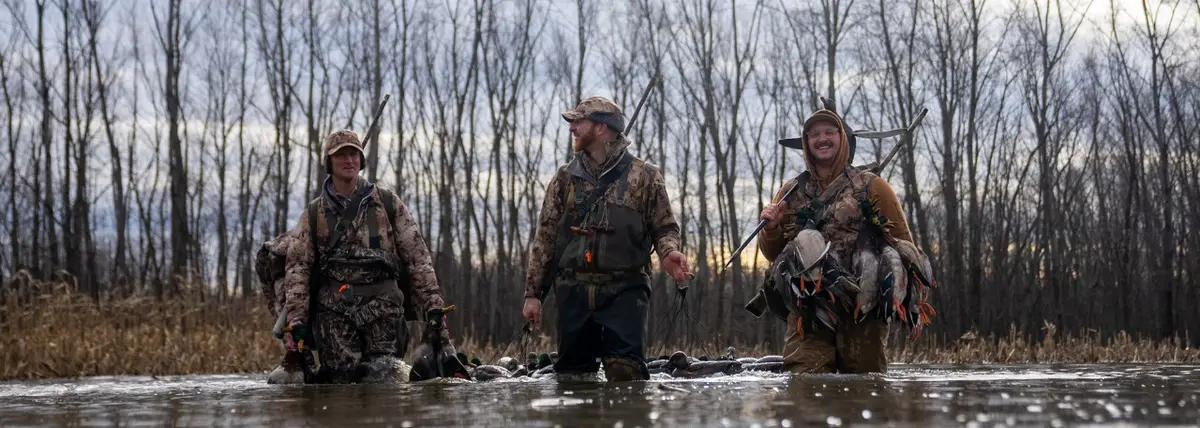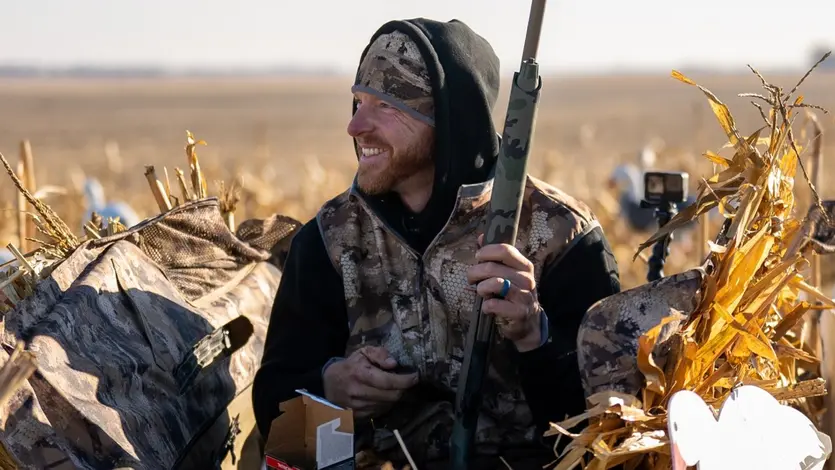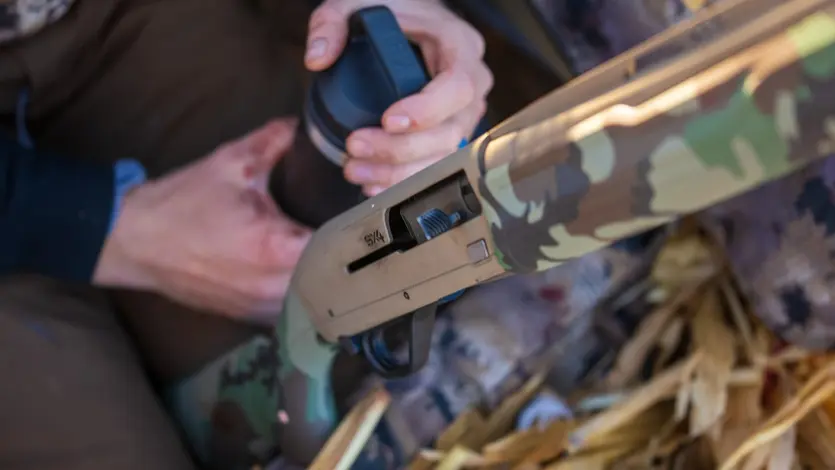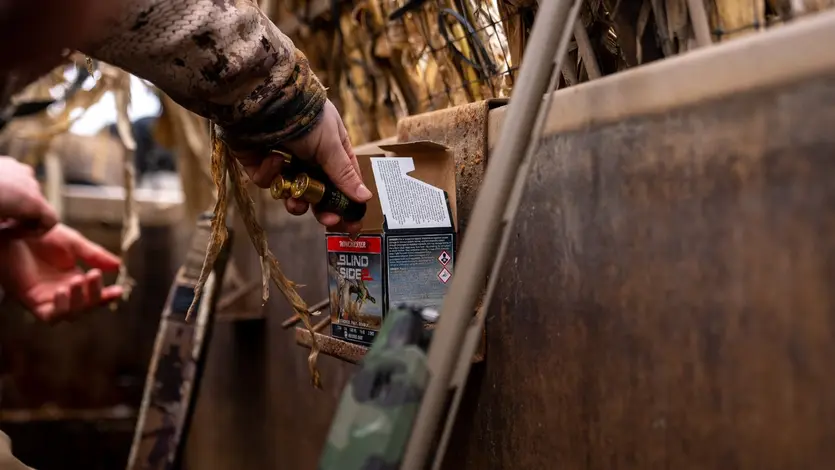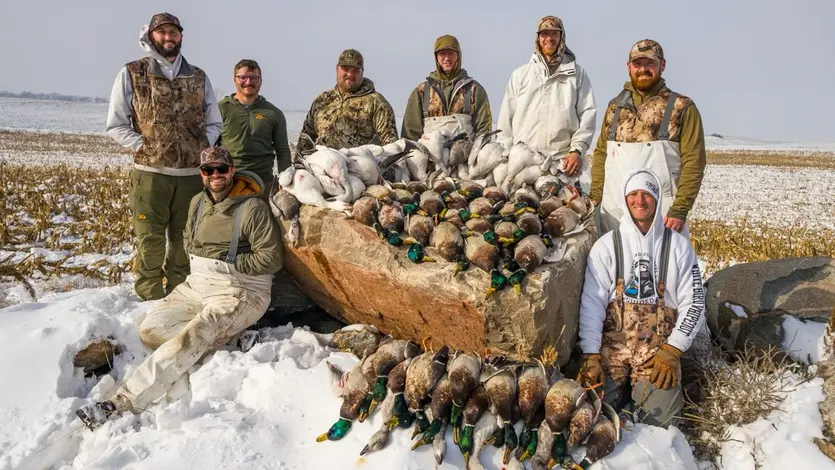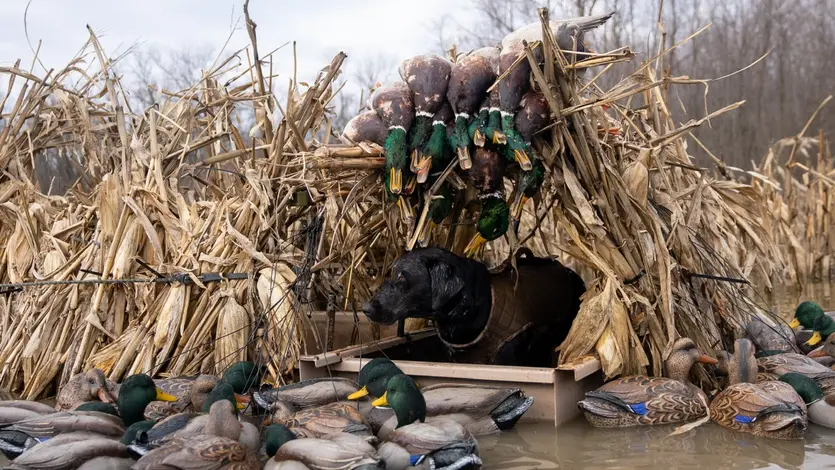Ducks! An Interview With Team Winchester's Zach Wentz
Ducks! An Interview With Team Winchester's Zach Wentz
By Jace Bauserman Published November 15th
Years ago, I enjoyed chewing the fat with NFL Quarterback Carson Wentz. The topic wasn’t football, but whitetails. Minutes into the conversation, I could tell Carson was a hunter, and his knowledge base was deep.
At the time, Carson and his brother Zach had just launched their YouTube Channel, Wentz Bros Outdoors. Today, that channel has 11K subscribers and is growing.
After surfing the channel, I decided to reach out to Carson’s brother Zach and talk duck. Zach Wentz is a duck fanatic, and like the conversation with his brother years ago, it was quickly evident that Zach knows more about duck hunting than most. His advice was as sound as the day is long.
Why Winchester?
Why Winchester?
One of the first things Zach wanted to discuss was his Winchester SX4 Semi-Auto Shotgun.
“We hunt a lot of waterfowl all over the country, and we hunt hard,” said Wentz. “I think the biggest advantage to the SX4 is its durability.”
Wentz went on to talk about how his waterfowl crew has tested the shotgun from the prairies of North Dakota to the flooded timber of Arkansas to saltwater locales hunting sea ducks. It has proved tried and true in every environment and in the worst weather conditions possible.
“It’s easy to put down on paper that a shotgun is reliable and can take a beating,” Wentz said. “It’s quite another thing for guys to take that shotgun, hunt in various settings, and have no-fail success.”
With a laugh, Wentz told me he had experienced zero dependability issues with the SX4, and that he has hunted with several guys that aren’t Team Winchester guys, and many of them shoot an SX4.
“I have seen some beaten and battered SX4 shotguns over the years,” he continued. “I have seen some that are scarred, have been stripped of color, etc., but when the trigger is pulled, the shotgun goes boom. That’s why waterfowl hunters love this shotgun.”
Why Blind Side 2?
Why Blind Side 2?
Another Winchester product that Wentz was very highly excited about is Winchester’s Blind Side 2 shotshells.
“Again, you can jump on the Winchester Ammunition website or read some online reviews about this ammo,” Wentz said. “You can read that Winchester improved its Hex Steel Shot to boost pattern control and shot density. You can read about how the Drylock Wad helps the powder stay dry and how the shot inside is stacked tight. We have tested Blind Side 2 time and time again. It is our go-to ammo for waterfowl. I have cut the crimp off these shotshells and seen how uniform the Hex Steel Shot is packed. I have seen its long-range performance. I love it.”
Regarding larger puddle ducks, Wentz and his crew lean on Blind Side 2 in #2 shot size.
“For big ducks, I love the performance of the #2 shot. It’s a tremendous all-around duck shotshell, and we have found that it works well on lesser Canada geese and snow geese. The 1-3/8-ounce payload is impressive — you get a lot of pellets in the air.”
Wentz recommends that any duck hunter, regardless of the size of the duck, choose Blind Side 2 3-inch #2 shot.
“Sometimes, especially during the early season, we may drop down in shot size if we target teal and wood ducks, but 99 percent of the time, the #2 shot is our all-around go-to.”
“You can’t beat its performance, and you often get a mixed species bag when hunting ducks. The #2 shot is the perfect all-around shot size. It’s a remarkable universal shot size for waterfowl.”
Tips For First Timers
Tips For First Timers
Wentz feels that there is a misconception about duck hunting. That misconception is that you just go out, find any water or dry field, set a dozen decoys, and kill ducks.
“You need to spend some time learning about the ducks in your area,” said Wentz. “You need to know where their primary roosting water is and what water sources and dry field sources they prefer for feeding. We scout hard. We try to stay off the roost and hunt ducks where they feed. That may be a flooded cornfield, standing water in the timber, or a dry field.
“If you can keep from blowing the roost, you will keep birds around longer and have more successful hunts.”
As for morning hunts versus evening hunts, Wentz pointed out that there is a time and place for both. Their crew hunts more mornings than evenings to avoid shooting the roost, but when the weather is right, and you’ve scouted, evening hunts can be productive on water locations and dry fields that ducks use to fill their bellies.
“We hunt a lot of mornings,” said Wentz. “Typically, during the morning, ducks leave the roost to feed. Evenings can be difficult. However, knowing where the roost is, you can pattern ducks on evening food sources and not blow the roost. Cold weather events typically cause ducks to leave the roost in the afternoon and hit a food source. If you spend time scouting and know where the ducks are feeding and the weather is right, you can have some tremendous afternoon shoots.”
The Hide
The Hide
Another area Wentz feels duck hunters need to put a lot of focus on is their hide.
“Next to being where the ducks want to be, the hide is likely the most important thing!” exclaimed Wentz. “We use everything from layouts to A-frame-style blinds to natural blinds along a field edge. Take the time to blend your blinds into the terrain. Fill the loops on your A-frames and layouts with natural cover; you can’t bob around when the birds are overhead.”
“You can get away with a little less concealment before the sun comes up, but on those bright sunny days when the big ducks start flying after the sun is up, you better make yourself as invisible as possible. Pay attention to your hide, and you’ll kill more birds.”
Wentz and his crew go as far — if birds are flaring or not wanting to finish — as sending a hunter out and having them look back toward the hide. Doing so allows the hunter to evaluate the hide and provide immediate intel about what the ducks may see.
“Don’t be afraid to adjust your hide or make it better. If ducks are flaring, they likely see something they don’t like. Sometimes, all that’s needed is an adjustment to the decoys — opening a landing spot, etc., but often, they see something they don’t like with the hide."
To watch Carson and Zach in action, visit their YouTube channel, Wentz Bros Outdoors. The channel is both entertaining and informative.



